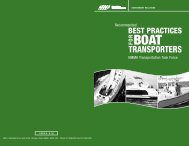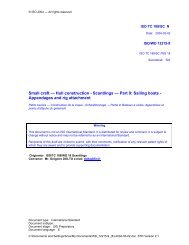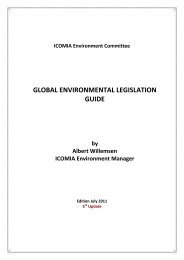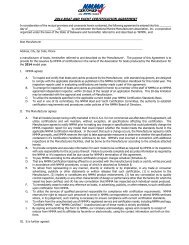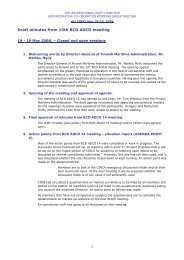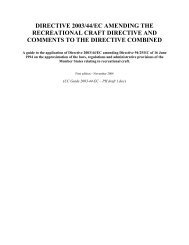Intellectual Property Protection and Enforcement Manual - Ipr-policy.eu
Intellectual Property Protection and Enforcement Manual - Ipr-policy.eu
Intellectual Property Protection and Enforcement Manual - Ipr-policy.eu
Create successful ePaper yourself
Turn your PDF publications into a flip-book with our unique Google optimized e-Paper software.
Br<strong>and</strong> <strong>Protection</strong> <strong>Manual</strong><br />
of the mark <strong>and</strong> exclusive right to use the mark nationwide on or in connection with the goods or<br />
services listed in the registration; (3) the ability to bring an action concerning the mark in federal<br />
court; (4) the use of the U.S. registration as a basis to obtain registration in foreign countries; <strong>and</strong><br />
(5) the ability to record the U.S. registration with U.S. Customs <strong>and</strong> Border <strong>Protection</strong> (CBP) to aid<br />
in the seizure of infringing or counterfeit foreign goods. 7 <strong>Protection</strong> for a registered mark exists as<br />
long as the mark is properly used <strong>and</strong> its registration is maintained <strong>and</strong> renewed.<br />
Applications to register trademarks can either be filed in hard copy or electronically via the Trademark<br />
Office’s Trademark Electronic Application System (TEAS) at http://www.uspto.gov/teas/index.html. 8<br />
Examination Process<br />
Once a trademark application has been filed, the Trademark Office assigns a Trademark examiner<br />
to review the application to determine whether the mark can be registered. During the examination<br />
period, the examiner may issue “office actions,” raising specific obstacles to registration. Such<br />
obstacles may be procedural in nature, for example, seeking a better description of the goods set forth<br />
in the application, or they may be substantive. Substantive obstacles include refusals based on the<br />
likelihood of confusion with a preexisting registered mark; the use of a name, portrait, or signature<br />
of a living individual without consent; the inclusion of immoral or sc<strong>and</strong>alous matter; or the fact<br />
that the mark is either a generic term (which can never be registered) or is merely descriptive, that is,<br />
would not be recognized by consumers as an indicator of source. 9<br />
The applicant has up to six months to respond to an office action by presenting arguments to<br />
convince the Trademark examiner that a refusal was in error. With respect to a descriptiveness refusal,<br />
for example, the applicant can introduce evidence to show that the mark has “secondary meaning,”<br />
that is, that based on exclusive use, promotion, <strong>and</strong> sales, consumers do, in fact, recognize the mark<br />
as an indicator of source. If the Trademark examiner does not accept the applicant’s arguments, the<br />
applicant can appeal the determination to the Trademark Trial <strong>and</strong> Appeal Board, which will make its<br />
own determination of whether the mark should be registered. 10<br />
If the application meets the approval of the Trademark examiner, or if the applicant is ultimately<br />
successful on an appeal to the Trademark Trial <strong>and</strong> Appeal Board, then the mark will be published<br />
for opposition in the Trademark Office’s Official Gazette in order to provide third parties with<br />
an opportunity to oppose the registration of the mark. 11 If an opposition is filed, an opposition<br />
proceeding commences. The proceeding is similar to, albeit not as complex as, a litigation in federal<br />
court. The parties engage in discovery, with document requests <strong>and</strong> interrogatories, take depositions,<br />
<strong>and</strong>, ultimately, submit their evidence <strong>and</strong> legal memor<strong>and</strong>a to the Trademark Trial <strong>and</strong> Appeal Board<br />
for determination. Decisions of the board can be appealed to the federal court system. 12<br />
If no opposition is filed, the mark will be registered, <strong>and</strong> the applicant will receive a certificate of<br />
registration in due course. The applicant then becomes responsible for ensuring that the registration is<br />
maintained by filing periodic statements of continued use with the U.S. Patent <strong>and</strong> Trademark Office. 13<br />
Page 5



